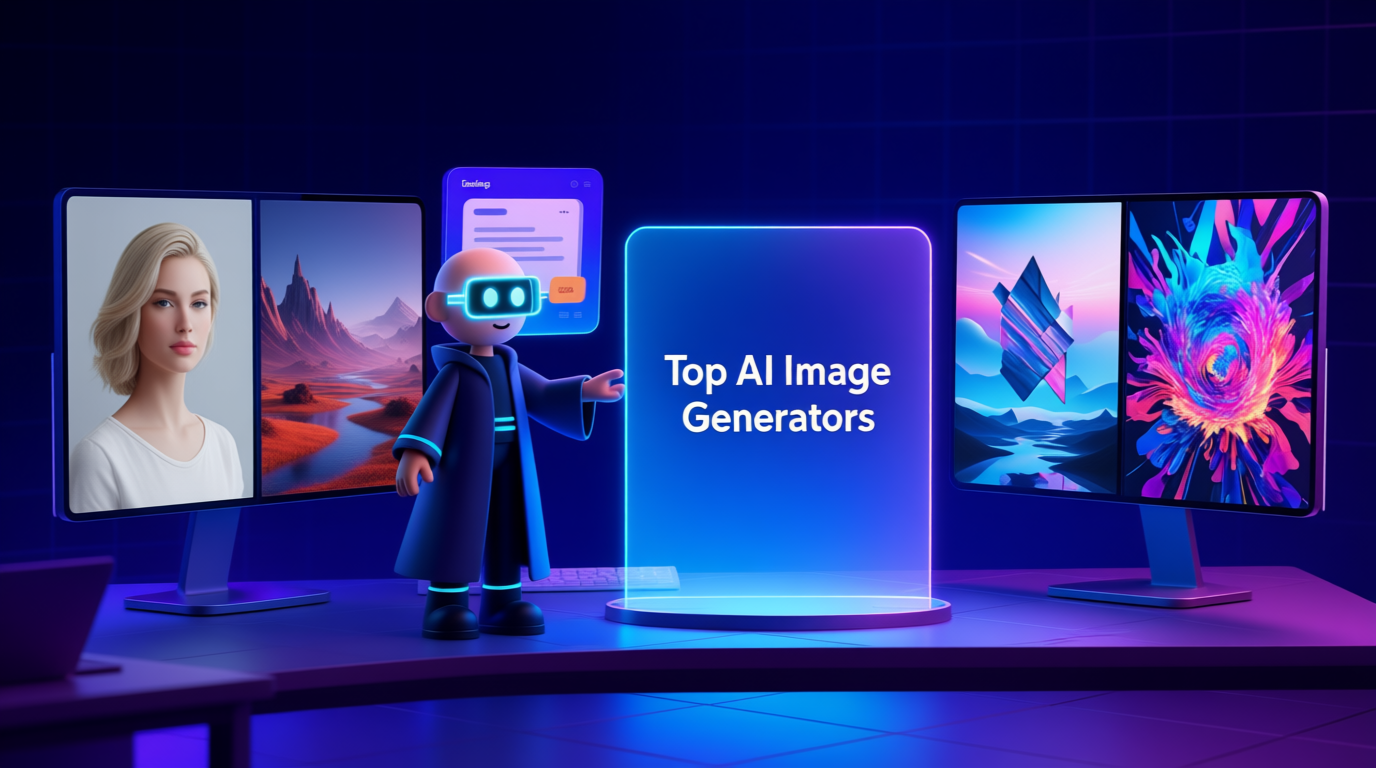AI-generated visuals have transitioned from a curious novelty to an essential tool in marketing, design, and content creation. In 2025, the leading models offer unprecedented quality, prompt fidelity, and workflow integration, allowing users to create everything from hyper-realistic photos to complex digital art in seconds.
Choosing the right tool depends on your specific needs: are you an artist seeking unparalleled creative control, a marketer needing commercial-safe images, or a blogger looking for quick, high-quality illustrations?
Here is a comprehensive breakdown of the best AI image generators dominating the creative landscape today.
1. Midjourney: Best for Artistic and Highest-Quality Results
Midjourney remains the industry leader for generating images with striking artistic flair and cinematic quality. Known for its aesthetic output and exceptional handling of mood and lighting, Midjourney is the go-to for artists, concept designers, and anyone seeking visuals that push the boundaries of creativity.
While its primary interface is still Discord, its dedicated web app continues to improve, making it easier to manage creations. If your primary goal is the highest-quality, most aesthetically pleasing image output, Midjourney is the clear winner. Commercial usage rights are included with paid subscriptions.
2. DALL-E 3 (via ChatGPT/GPT-4o): Best for Prompt Adherence and Ease of Use
Developed by OpenAI and integrated directly into ChatGPT (and now powered by GPT-4o), DALL-E 3 is a strong contender for the "best overall" tool, especially for ease of access and its superior understanding of natural language prompts.
DALL-E 3 excels at interpreting complex, nuanced instructions and generating images that adhere tightly to the prompt details. Users can interact with it conversationally, asking it to edit, modify, or iterate on a previous image without having to re-enter a long prompt. This makes it ideal for content teams who need tightly aligned visuals for blog illustrations, technical diagrams, or social media posts, all within their writing environment.
3. Adobe Firefly: Best for Commercial Safety and Professional Integration
For creative professionals, designers, and large businesses, Adobe Firefly is the platform of choice. Its main advantage is its safety for commercial use: Firefly was trained on Adobe Stock's licensed content, public domain content, and out-of-copyright content, giving designers the assurance that their AI-generated visuals are commercially safe.
Integrated seamlessly into Adobe Creative Cloud tools like Photoshop and Illustrator, Firefly excels at in-app editing functions like generative fill, background expansion, and composite imagery. It is designed to fit directly into established professional design workflows.
4. Ideogram: Best for Accurate Text Rendering
One of the longest-standing issues with generative AI is its inability to accurately render text within images. Ideogram has carved out a distinct niche by solving this problem better than any other generator.
Developed by former Google researchers, Ideogram is the best choice for social media banners, posters, logos, and any visual that requires clear, legible typography. For marketers needing to generate graphics with precise messaging, Ideogram provides the reliability that other major tools often lack.
5. Leonardo.Ai: Best Free Tier and Customization for Creators
Leonardo.Ai has quickly become a community favorite, particularly for its concept art capabilities, gaming assets, and generous free tier. It is often cited as the best free AI image generator available.
The platform offers a unique toolkit that allows users to fine-tune outputs, leverage specialized models (like those for photorealism or cinematic focus), and utilize features like Image Guidance and ControlNet for granular creative control. Leonardo.Ai provides a high degree of customization, making it an excellent resource for hobbyists and independent creators looking to explore diverse artistic styles.
6. Stable Diffusion: Best for Customization and Open-Source Control
Stable Diffusion is the most renowned open-source text-to-image model. While it requires more user optimization and technical know-how (especially when locally hosted), its flexibility is unmatched.
It allows users to download the model, run it on their own hardware, and heavily customize it using various checkpoints and extensions. This makes it the preferred tool for developers, researchers, and advanced users who need complete control over the generation process and wish to create unique, highly specialized outputs.
FAQs
1. Is it safe to use AI-generated images for commercial purposes?
It depends on the tool. Adobe Firefly and Getty Images Generative AI are generally considered the safest for commercial use because they are trained on licensed datasets that minimize copyright risk. For other tools like Midjourney or DALL-E, while paid subscriptions often grant you commercial rights, the legal landscape is still evolving, so it's essential to check the specific terms of service for the model you are using.
2. Which AI generator produces the most realistic human photos?
While all top models are improving, Midjourney and models built on advanced Stable Diffusion checkpoints (often accessible via platforms like Leonardo.Ai) frequently produce the highest-quality, most hyper-realistic, and aesthetically superior photorealistic images, often surpassing the quality of DALL-E 3 in raw photographic detail.
3. Why do most AI image generators struggle with rendering text?
Text-to-image models fundamentally treat words as visual textures and patterns rather than distinct, meaningful characters. They are trained on millions of images but often don't have a strong conceptual model of language and spelling. Ideogram is a notable exception, as it was specifically engineered to tackle this challenge.
4. Do I need a powerful computer to run these AI image generators?
No. The most popular generators (DALL-E 3, Midjourney, Adobe Firefly, Ideogram) are cloud-based. This means all the heavy processing is done on the company's powerful servers, and you only need a standard internet connection and a web browser or a chat app (like Discord or ChatGPT) to use them. Only open-source models like Stable Diffusion, if run locally, require a high-end graphics card (GPU).
5. Are there good free AI image generators available?
Yes, several excellent tools offer free access. Leonardo.Ai offers a generous free daily credit system. Canva's integrated AI image generator is free within the Canva platform for basic usage. Microsoft Copilot Designer (using DALL-E 3) also provides free image generations, often focused on social media-friendly outputs.
